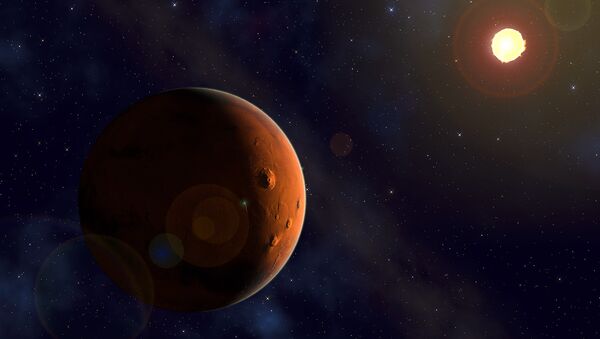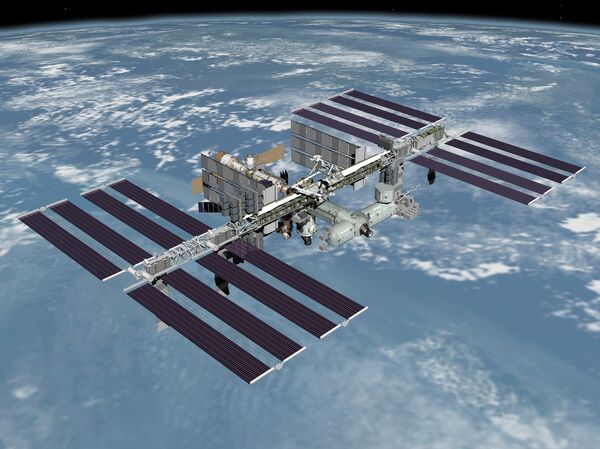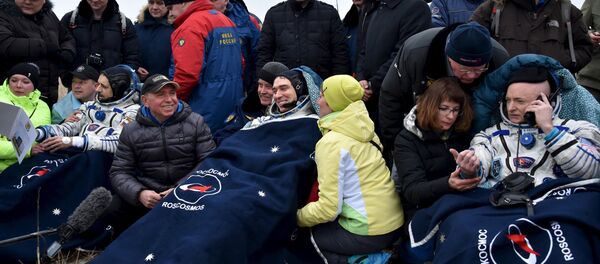Construction of the ISS began in 1998 when Russia's Zarya module was launched. It's last major part, the Alpha Magnetic Spectrometer module, was delivered in May 2011 by the US Space Shuttle Endeavour on its 25th and final mission.
In March last year the head of Roscosmos Igor Komarov confirmed that the ISS will continue its scientific investigations until 2024, and revealed that the US and Russia are in talks about the successor to the international project.
"Roskosmos and NASA are going to work on a project for a future orbital station," Komarov said.
"It will be an open project, and not just the current participants in the ISS will take part. It will be open to everybody who wants to join (the project)," Komarov said, Vesti.ru reported.
NASA administrator Charles Bolden said that the countries might collaborate on a mission to Mars.
"The direction of our collaboration is Mars. We are in discussions about how best to use resources, finances, determine time-frames and how to coordinate our efforts so that activities are not duplicated," Bolden said, as reported by Vesti.
Several rovers and orbiters are currently studying Mars; the latest is ExoMars, a joint mission by Roscosmos and the European Space Agency, launched from Baikonur in March 2016. However, a human mission is planned for the 2030s at the earliest.

"We are very reliant on one another," in the ISS project, and mission control centers in Moscow and Houston are in daily contact, Gerstenmaier said.
On Tuesday Anatoly Zak, author of RussianSpaceWeb.com, presented several of the options under discussion in an article for Popular Mechanics.
Zak revealed that American aerospace companies like Boeing and Lockheed Martin have been working with Russian colleagues from spacecraft manufacturers RSC Energia and GKNPTs Khrunichev to devise mission strategies.
Several of the strategies under discussion envisage the creation of an international "habitat" in cislunar space, the vicinity of the moon.
Latest concepts for #NASA/#Roscosmos cis-lunar missions explained and illustrated @PopMech: https://t.co/4NelD9UGGi pic.twitter.com/MAMsdS75hF
— Anatoly Zak (@RussianSpaceWeb) July 19, 2016
This base "could serve as a platform for the exploration of our natural satellite and a springboard for missions to asteroids and even to Mars," Zak wrote.
"The two sides seem to understand why they need each other, and how the pieces fit together. For their part, the Russians have mastered the development and operation of space modules that can house crews and provide propulsion for years at a time. (As it) turns out, that's exactly what the US could use. Such a habitat would expand the livable volume for the Orion crews beyond the cramped one-room compartment of the ship's command module, extending the possibilities for missions."
At an ISS research and development conference in San Diego last week, NASA's William Gerstenmaier confirmed to Zak that near-lunar missions are being considered as a stepping stone for a future manned mission to Mars.
"Don't think of it as a space station around the Moon. Think of it as the beginning of the Mars transit system," Gerstenmaier said.
On the ISS, investigations are being carried out to understand how to protect the human body for longer durations in space, which a human mission to Mars would require.
In March 2016 American astronaut Scott Kelly and Russian cosmonaut Mikhail Kornienko landed in Kazakhstan after spending a record 340 days in space, aboard the ISS.
One particular research project during the "One-year mission" examined fluid shifts that occur when bodily fluids move into the upper body during weightlessness, which may cause pressure on the head, similar to that experienced by a person standing on their head.






